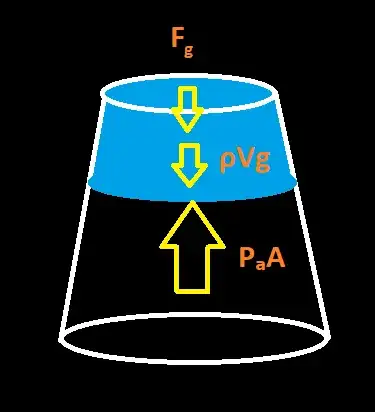Suppose I have an upside down glass of water that I somehow brought in the configuration shown below (without any air between the glass and water). Now the water will obviously fall down but my question is why exactly?
The forces on the water column are $\rho Vg$ downwards due to gravity, $P_aA$ upwards due to the atmosphere and $F_g$ downwards due to the glass. If $P_aA>\rho Vg$ (which can be easily achieved by reducing $V$), $F_g$ could simply be equal to $P_aA-\rho Vg$ and the water would be in equilibrium and would have no reason to fall down.
